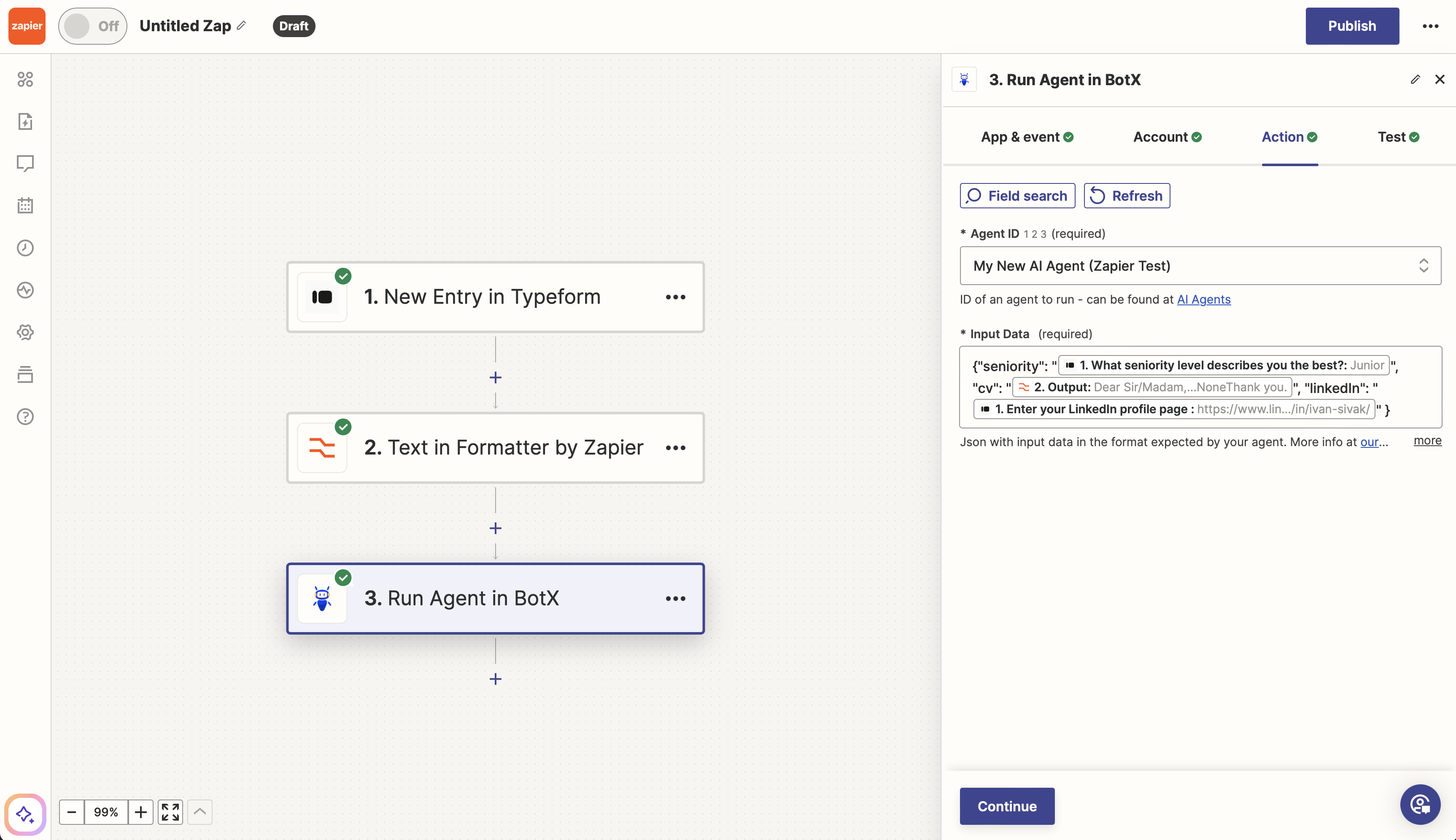Zapier Integration
We are excited to introduce the BotX Zapier App, which enables seamless integration between our BotX platform and Zapier. This integration allows users to trigger BotX AI agents using any of the thousands of Zapier triggers, making automating workflows with dynamic AI capabilities easier than ever.
Benefits of Zapier Integration
-
Versatile Triggers: Users can leverage any Zapier trigger to activate BotX AI agents, integrating a wide array of applications and services into their AI-powered workflows.
-
Dynamic Input Handling: The output of each Zapier trigger is a JSON object that serves as the input for BotX AI agents. This dynamic input capability is essential because it allows our AI agents to process a variety of data structures and content.
-
Generative AI Use Cases: The JSON input can vary depending on the context for generative AI applications. Here are a couple of examples:
- Simple Input:
{
"userSays": "question for GPT"
}- Complex Input:
{
"userMessage": "question for GPT",
"additionalContext": "third party integration document"
} -
Customizable Input Templates: In BotX, users can define input templates using our configuration editor. This flexibility ensures that the AI agents can be tailored to handle specific data formats and requirements.
In BotX, users can define input templates using our configuration editor. This flexibility ensures that the AI agents can be tailored to handle specific data formats and requirements.
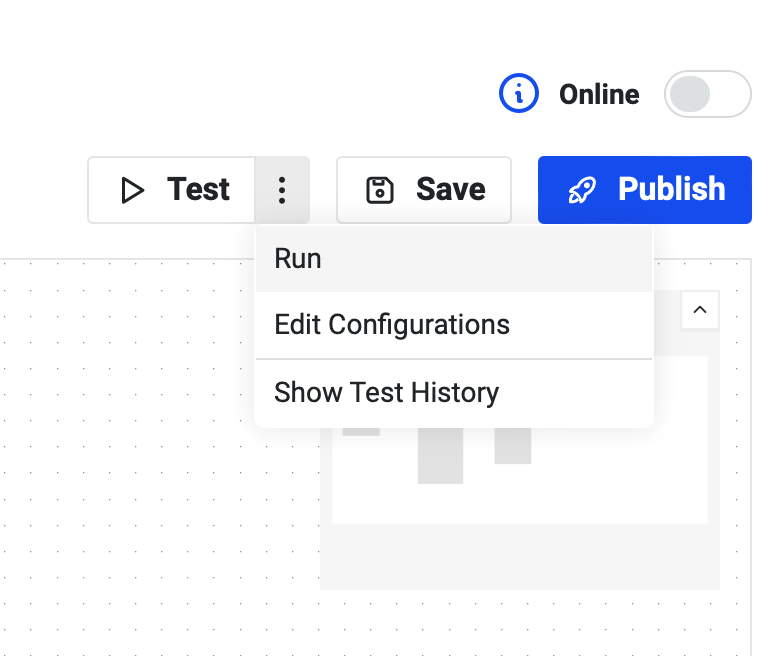
Users can create and manage multiple input templates, each with its own structure and fields. This feature is particularly useful for handling different types of inputs from various Zapier triggers.
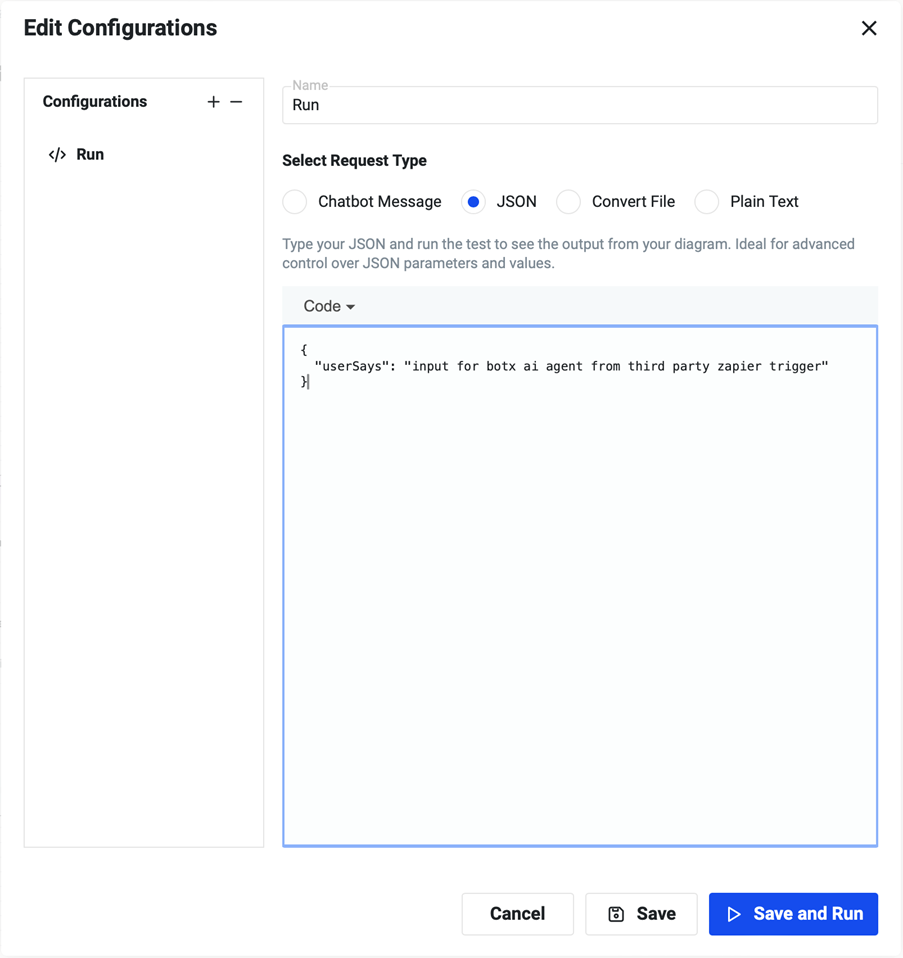
Why JSON Input is Necessary
JSON is a dynamic and flexible data format that allows our AI agents to consume various types of input efficiently. By using JSON, we ensure that the integration can handle a wide range of scenarios and data structures, which is crucial for the following reasons:
- Flexibility: JSON allows for the encapsulation of a diverse array of data in a single, standardized format. This is vital for handling different types of inputs from various Zapier triggers.
- Scalability: As new triggers and applications are added to Zapier, the JSON format ensures that our AI agents can continue to process inputs without needing extensive reconfiguration.
- Contextual Understanding: In generative AI use cases, having a structured JSON input helps our AI agents to understand the context better and provide more accurate and relevant outputs.
JSON Issues and Solutions
Since Zapier's support for JSON is limited, especially with more complex structures, it's important to be aware of potential issues and solutions when working with JSON inputs in the BotX Zapier App. Here are some common problems and their corresponding solutions:
HTTP Error 400: Bad Request
Most likely, this error occurs when the JSON input is not formatted correctly due to newlines or other special characters. To resolve this issue, insert a Text formatting step between the trigger and the BotX action, and set the Transform option to Replace.
- Add a
Formatterstep after the trigger and before the BotX action.
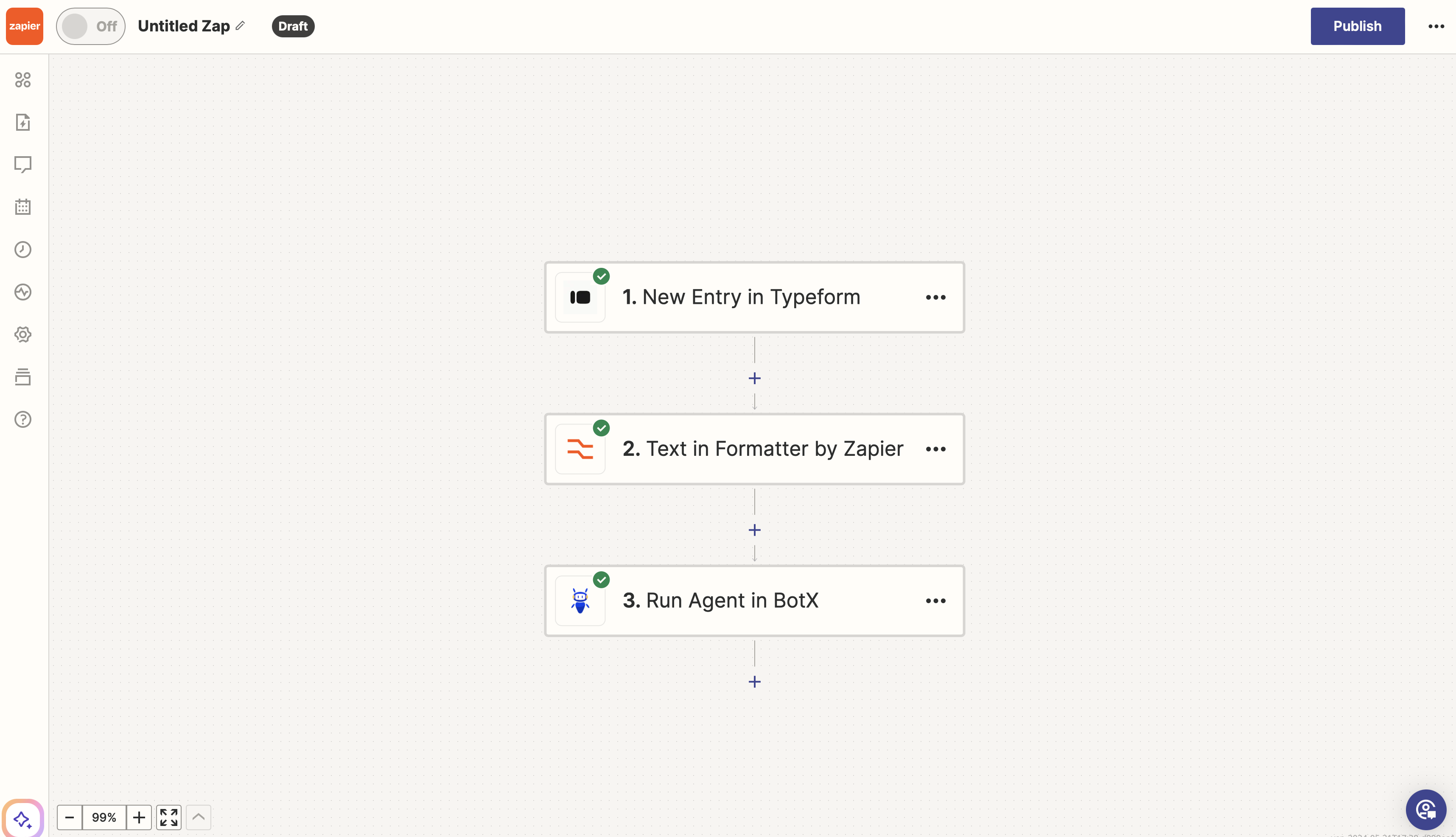
- Set the
Eventoption toText.
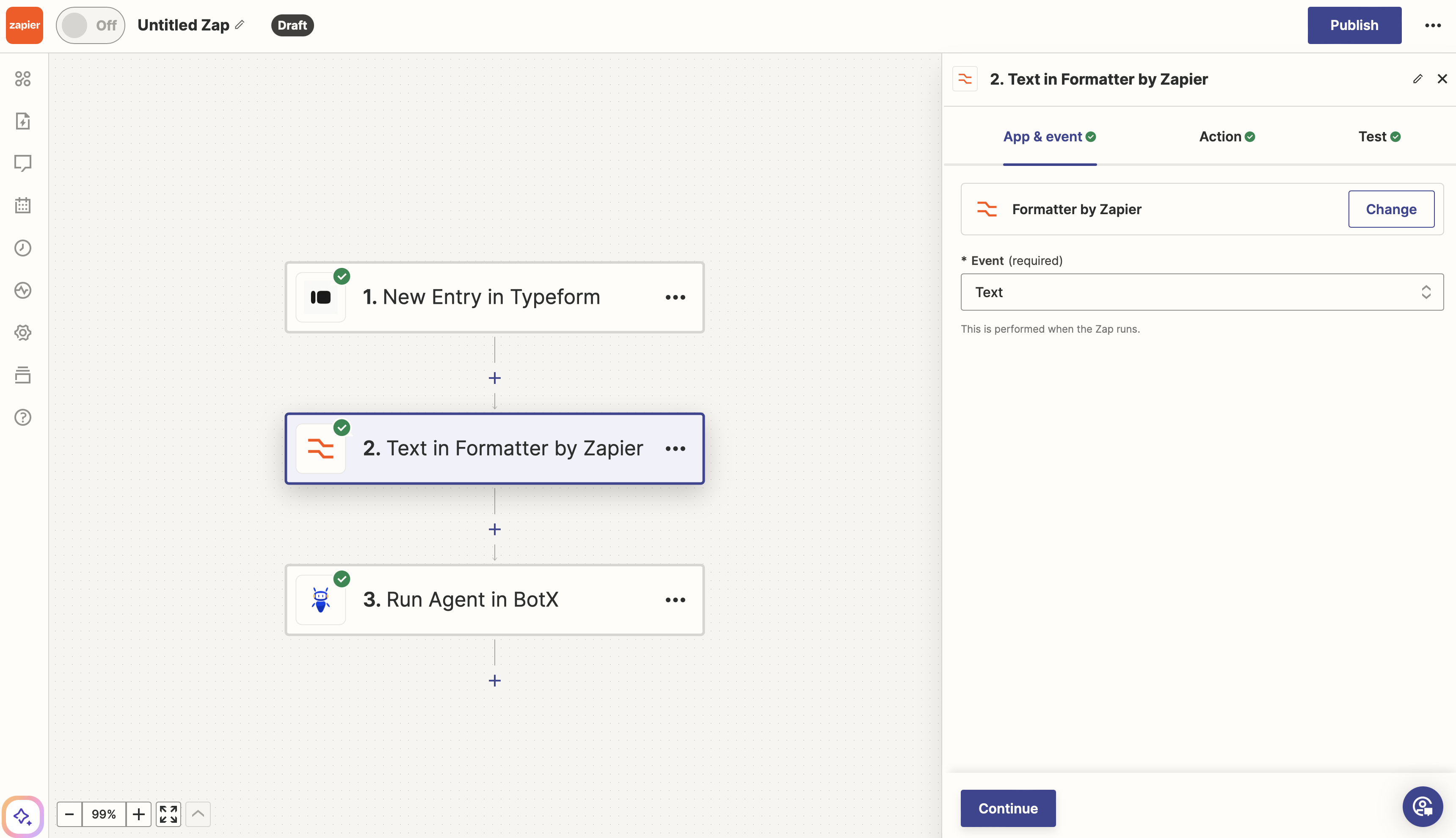
- Set the
Transformoption toReplace. Set theInputvalue to whatever field you know contains a special characters (including newlines). Set theFindvalue to[:newline:]and leave theReplacevalue empty to remove the newlines (or other special characters).
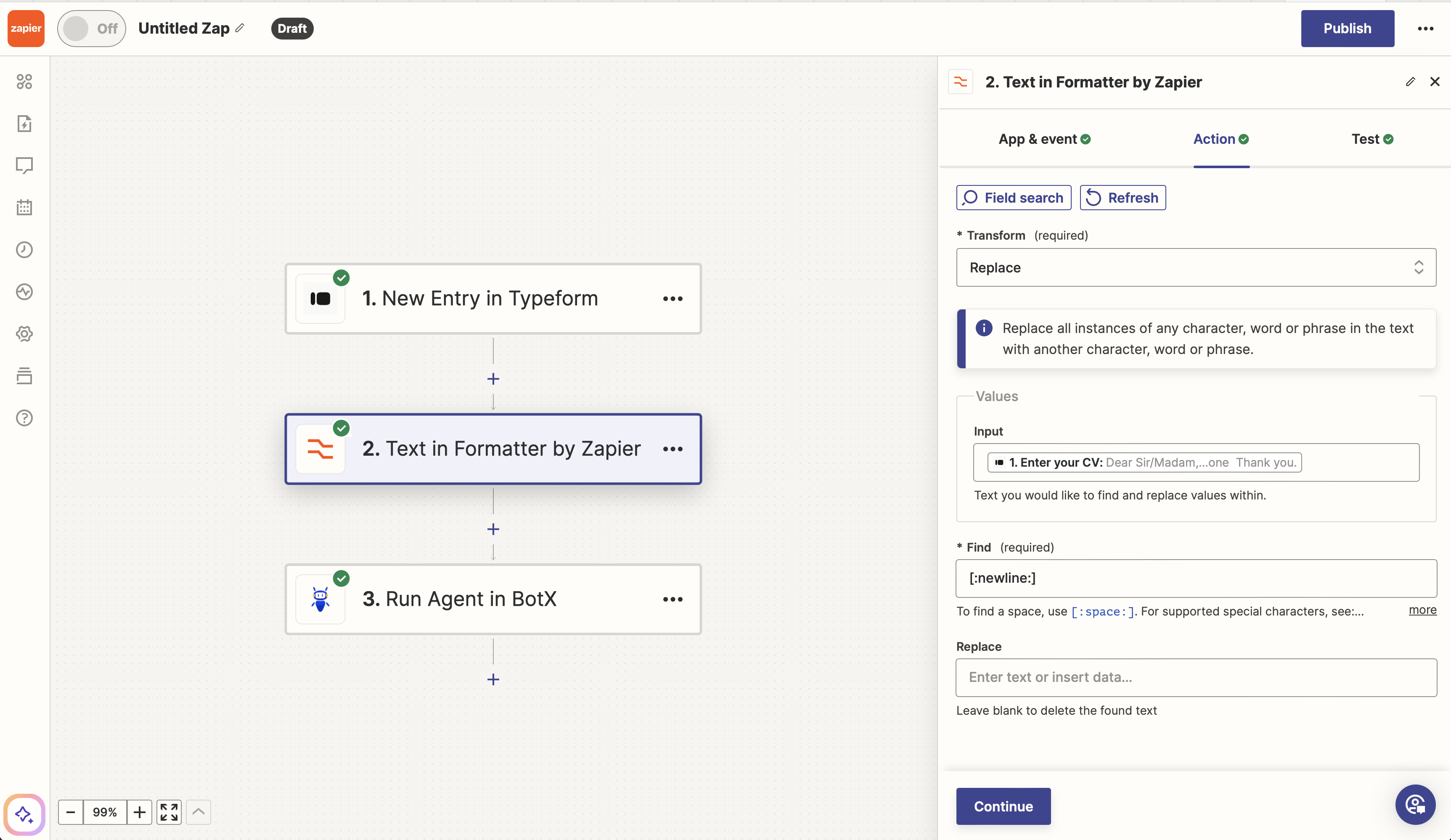
- Make sure the
Input Datafield in the BotX action is properly formatted as JSON and the values of the fields are enclosed in double quotes. Also, make sure to use the formatted data from theFormatterstep as thecvfield in this example:
